Of course we love Major League Baseball prospects. Maybe it’s not fair that we pay so much attention to them and make silly comments like comparing a young player to Ken Griffey Jr. or saying this kid throws harder than Nolan Ryan, thus implying he might be the next Nolan Ryan. But we do it nonetheless, forgetting in our lustful eyes that baseball is hard and there are no guarantees of future stardom, no matter how pretty the swing or how fast the fastball.
Here are the most hyped prospects for each team, sorted into tiers, focusing on that time between when the player was drafted and when he reached the big leagues. It skews to the past couple of decades, mostly because we do know so much more about prospects than we used to — not to suggest that players like Mickey Mantle were ignored back in the day — and we can watch video and read scouting reports and dream on what might happen.
Jump by tier:
Tier 1: The Electric Eight | Tier 2: New York, New York
Tier 3: They Might Be Giants | Tier 4: You Never Know
Jump to a franchise:
American League
BAL | BOS | CHW | CLE | DET
HOU | KC| LAA | MIN | NYY
OAK | SEA | TB| TEX | TOR
National League
ARI | ATL | CHC | CIN | COL
LAD | MIA | | MIL | NYM | PHI
PIT | SD | SF | STL | WSH
TIER 1: THE ELECTRIC EIGHT
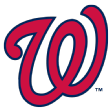 Washington Nationals: Stephen Strasburg and Bryce Harper (tie)
Washington Nationals: Stephen Strasburg and Bryce Harper (tie)
Also considered: Vladimir Guerrero (Expos)
Quote: “Harper has been compared to Justin Upton, Alex Rodriguez and Ken Griffey Jr., each a freakishly advanced high school player and each the top overall pick of his draft. But Harper, say the baseball men who are paid to make such assessments, has the ability as a sophomore that the aforementioned trio had as seniors. That is why Harper — to his own approval — is best compared to [LeBron] James.” — Tom Verducci, Sports Illustrated
That’s from the famous SI cover story that thrust Harper into the national spotlight when he was just 16. The headline called him “Baseball’s Chosen One,” and the article compared Harper not only to James but to Tiger Woods, Wayne Gretzky and Alexander the Great. Harper mentioned his goals as a baseball player: Make the Hall of Fame and “play in the pinstripes.” (Hey, the Phillies do wear pinstripes.)
You can make the argument that Strasburg and Harper are the two most hyped prospects of the draft era, back-to-back No. 1 overall picks in 2009 and 2010, with Strasburg called the best pitching prospect ever and Harper perhaps the best position player prospect, or at least the best since Rodriguez or Griffey. When Baseball America published its “Ultimate Draft Book” in 2016 (an invaluable resource for this article), it listed Strasburg as the most hyped draft pick ever and Harper No. 2.
Strasburg came out of San Diego State as a generational talent, the best college pitcher of all time, maybe the best pitching prospect of all time, maybe the best prospect of all time. He reached triple digits with a plus-plus breaking ball, a plus changeup, excellent command and the size and build you want in a pitcher. His major league debut against the Pirates in 2010 drew unprecedented attention, and he didn’t disappoint, with 14 strikeouts in seven innings. With Harper, because of that cover story, we had been following him for three years when he debuted with the Nationals at 19 in 2012. I even remember listening to his first minor league game on internet radio. These two are 1 and 1A on the most hyped list, in whichever order you prefer.
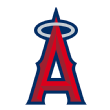 Los Angeles Angels: Shohei Ohtani
Los Angeles Angels: Shohei Ohtani
Also considered: Rick Reichardt, Jim Abbott, Mike Trout
Quote: “Short stretches of baseball are inherently inconclusive, but we can now say Ohtani is certainly one of the 50 best pitchers in the world, probably one of the 30 best, plausibly one of the 10 best, and there’s an outside chance, a glimmer of hope, a faint possibility he’s actually the best pitcher in the world and we’re just waiting to find that out. And we can almost say the same about him as a hitter.” — Sam Miller, ESPN.com
First, a word on Abbott. In my mind, the debut of a hyped pitching prospect is more fascinating than for a hitting prospect. For position players, one game doesn’t tell us anything. Trout went 0-for-3 and hit .157 in his first 16 games. Harper went 15 games before hitting his first home run. Kris Bryant fanned three times in his debut. Alex Bregman started with five hitless games in a row and went 2-for-38. And so on. But with a pitcher, you know, right? You can see the fastball. You can see the stuff. You can see the potential and sometimes, like with Strasburg, you see the dominance in that first game.
Abbott wasn’t the top pitching prospect in his draft, but he was the ultimate human-interest story of the draft era, and you can argue Abbott’s debut was as anticipated as any of the highly touted pitchers on this list. Born without a right hand, he starred at the University of Michigan, beat Cuba in the Pan American Games before 50,000 fans in Havana and led the U.S. to a gold medal in the 1988 Olympics. The Angels drafted him eighth overall in 1988, and he went straight to the majors the following April. With 150 media representatives on hand, four Japanese television crews and nearly 47,000 fans in attendance, Abbott’s debut was a celebration that intrigued even non-baseball fans. (It didn’t go well, as he allowed six runs and didn’t strike out a single batter.)
Then, two years ago, we witnessed Ohtani, trying, inconceivably, to make it in the majors as a two-way player. You can quibble that he wasn’t really a prospect, since he had been a star in Japan, although he was still just 23 years old for his rookie MLB season. Even as he played his final season in Japan, preparing to come to the U.S., “60 Minutes” did a feature on him, calling him Japan’s Babe Ruth. Given what we soon saw, it wasn’t much of an exaggeration. Ohtani was covered in spring training like nobody before. He made his debut on Opening Day as a hitter. A couple of days later he made his debut as a pitcher and flashed amazing stuff. Then he homered in his second game. And his third game. And his fourth. Then he made his second start and struck out 12. Astonishing.
 Kansas City Royals: Bo Jackson
Kansas City Royals: Bo Jackson
Also considered: Clint Hurdle, Alex Gordon
Quote: “Franchise-type player; can do it all; a complete type of player. Greatest pure athlete in America today. Can run, throw and hit with power to all fields. Has outstanding baseball tools to go with outstanding athletic body and abilities.” — scouting report from Royals scout Ken Gonzales
Nobody really expected Bo Jackson to play baseball. He had won the Heisman Trophy in 1985 at Auburn University, and the Tampa Bay Bucs selected him first overall in the 1986 draft. He had to quit his senior season of baseball when the NCAA ruled him ineligible because the Bucs had flown him to Tampa for a physical. On top of that, the Bucs were offering a five-year, $7.5 million contract, which baseball wouldn’t be able to match.
Gonzales, however, had watched Jackson since high school and grown close to him and his mother. He knew Jackson was wary about playing for the Buccaneers. He knew the Royals were one of the teams he would consider playing baseball for (they were the defending World Series champs). Most of all, Gonzales loved Jackson’s potential on the diamond: He graded Jackson at 8 (or 80) on power, 8 on speed and 7 on his arm. Gonzales thought the Angels, with six picks in the first two rounds, would roll the dice. They didn’t. The Royals drafted him in the fourth round, signed him a few weeks later (for three years, $1.066 million) and he was in the majors in September.
Was Jackson a great baseball player? No, not really. He was too undisciplined at the plate and struck out too much. Despite his world-class speed, he wasn’t a great defensive outfielder. Still, the tools allowed for those occasional displays of outrageous athleticism, leaving one to wonder what might have happened if Bo had played baseball full time. It’s worth noting that he was getting better before he injured his hip playing football. With the Royals in 1990, he produced 142 OPS+ in 111 games, eighth in the American League. What might have been.
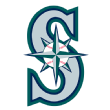 Seattle Mariners: Ken Griffey Jr.
Seattle Mariners: Ken Griffey Jr.
Also considered: Alex Rodriguez
Quote: “Has all the tools to be a superstar.” — Mariners scouting report, 1987
Griffey or A-Rod? On a pure scouting level, Rodriguez is usually regarded as the best amateur prospect of the draft era. Sure enough, he was in the majors at age 18, just 10 months after the Mariners drafted him. Griffey, of course, would also make any all-time all-prospect team. That Seattle scouting report from his senior season at Moeller High School in Cincinnati gave Griffey future grades of 7 for hitting, 8 for power, 6 for speed, 6 for arm strength and 7 for range. The Mariners took him with the first pick in the draft, bypassing the wishes of owner George Argyros, who pushed for Cal State Fullerton pitcher Mike Harkey (thank the baseball gods).
I believe Griffey beats A-Rod in prospect hype, however. First, he had the famous name. He signed quickly and hit .313 with 14 home runs in 54 games in the Northwest League, playing against college kids four and five years older than he was. In 1988, he hit .325/.415/.557 with 13 home runs and 36 steals in 75 games in the minors. He had that picture-perfect swing. He had the smile. He had that Upper Deck rookie card that every kid had to have. Twenty years later, Sports Illustrated would call it the last iconic baseball card. The Griffey hype entering 1989 is intertwined with that card.
When Griffey went to spring training that year, still a teenager with just 17 games above Class A ball, the Mariners wanted him to get a taste of big league camp and then go back to the minors. He hit .397 with a 15-game hitting streak. He made the club. He doubled off Dave Stewart in his first official at-bat. By the end of April, he had his own candy bar. He was The Natural.
 Toronto Blue Jays: Vladimir Guerrero Jr.
Toronto Blue Jays: Vladimir Guerrero Jr.
Also considered: John Olerud, Carlos Delgado
Quote: “For pure bat, Vlad Jr. is the best prospect in the minors. If you could put an 80 on any prospect’s hit tool, it would be his, and he has plus-plus power to go with it. Vlad’s hands are electric, and he has shown an advanced feel for the strike zone since his pro debut at age 17.” — Keith Law, ESPN.com
Like Griffey three decades before him, Vlad Jr. had the famous name — and the game to go with it (he hit .381 in the minors in 2018 as a 19-year-old). Like Griffey, he also had that panache that labeled him as something special, like his walk-off home run in a spring training exhibition game in Montreal in 2018, in front of the fans who had once cheered for his dad.
How big was the hype entering last season? When MLB.com named him its No. 1 prospect, the headline asked, “Is Vlad Jr. the best prospect ever?” The consensus was that he didn’t have the all-around game to hold that honor, but as Jim Callis wrote, “It’s difficult to find anyone who offered more offensive promise at a younger age.”
Guerrero’s rookie season was solid but unspectacular (.272/.339/.433, 106 OPS+), and Juan Soto certainly topped him as the best 20-year-old hitter in the majors. He’ll have to get the ball in the air more often to tap into that raw power we witnessed in the Home Run Derby, but he has time. He’s just 21.
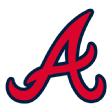 Atlanta Braves: Andruw Jones
Atlanta Braves: Andruw Jones
Also considered: Brad Komminsk, Steve Avery, Chipper Jones, Jason Heyward, Ronald Acuna Jr.
Quote: “What the most silent bunch of 56,365 souls in the history of Yankee Stadium saw Sunday night was Jones becoming baseball’s next something. A Ruth or Gehrig, perhaps. Or maybe a Mantle, who was the youngest person ever to slam a home run during a World Series until Jones topped the Yankee great.” — Terence Moore, Atlanta Constitution
Jones was 19 years old when he homered in 1996 off Andy Pettitte in the first World Series at-bat of his career, a two-run blast to left field. In his second at-bat, he homered again, this time a three-run shot into Monument Park, which seemed apropos for the mythology Jones was already building. The Braves have had five No. 1 Baseball America prospects. That doesn’t even include Komminsk, a rising star in the 1980s of whom Hank Aaron once said, “He will do things Dale Murphy never dreamed of.”
Those other players, however, didn’t hit two home runs in a World Series game as a teenager. Jones was already the top prospect in the game entering the 1996 season after hitting .277 with 25 home runs and 56 stolen bases at Low-A Macon. Across three levels in 1996, he hit .339 with 34 home runs, one of the great minor league seasons of the draft era, especially given his young age. He was still rookie-eligible entering 1997 and topped the prospect lists again. The comparisons to Mickey Mantle didn’t seem all that silly.
That didn’t quite happen, of course, although Jones had a remarkable career — 62.7 WAR, 434 home runs, 10 Gold Gloves — that many think is Hall of Fame-worthy. But his last good season came when he was 29, so that career is also viewed under the lens of some disappointment. An old scouting report from his days at Macon did provide a potential warning: “If player ever decides he wants to give 100%, he has no ceiling!” That effort — or perceived lack of it — would dog Jones throughout his career.
Maybe that’s also a little unfair. Jones did have some real flaws. He struck out too much, which is why he hit .300 just once and finished with a .254 career average (.267 through age 29). That scouting report also pointed out that he had a hole in his swing up and in against the fastball and that he was a pull hitter who rarely went to the opposite field. “Can cover gap to gap with anybody,” the report also read, and that part was true. There have been few — if any — who played center field as well as a young Andruw Jones.
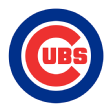 Chicago Cubs: Mark Prior
Chicago Cubs: Mark Prior
Also considered: Shawon Dunston, Kerry Wood, Corey Patterson, Kris Bryant
Quote: “At least when [Michael] Jordan was being hounded by an adoring public and media, he had a few NBA seasons under his belt and a few million Air Jordans on people’s feet. Prior had nine minor-league starts coming into [his major league debut].” — Rick Morrissey, Chicago Tribune
Bryant topped Baseball America’s list in 2015. Prior and Patterson reached No. 2, and Wood was No. 3 (as was Addison Russell). Dunston came along before the official top-100 lists, but BA did call him the second-best prospect in 1984 — ahead of Dwight Gooden. So who to go with? I’ll defer to Jim Callis, who recently named Prior to his all-time prospect team: “In my first year as a full-time employee of BA, [Ben] McDonald was acclaimed as the best college pitcher ever, a tag Prior would eventually earn and that [Stephen] Strasburg later would claim and may never relinquish. All three had size, stuff, polish and dominated in college and with Team USA.”
Prior had gone 15-1 with a 1.69 ERA in his junior season at USC, with 202 strikeouts and just 18 walks. He cruised through the minors in those nine starts. He fanned 10 in his highly anticipated debut, with Cubs fans chanting “Pri-or! Pri-or!” throughout the game. “He’s as polished as any young man I’ve seen,” said Cubs catcher Joe Girardi after the game. “The other guy I think about who was very polished was Derek Jeter.”
Prior would go 18-6 with a 2.43 ERA in his first full season, finishing third in the Cy Young vote. Then came the injuries. I found a scouting report from his college days, written by Buddy Pritchard for the Major League Scouting Bureau. He hinted at a potential issue with Prior’s delivery: “Flawed stride & arm angle a problem w/ self-described slurve.”
Some point to a collision with Braves second baseman Marcus Giles as the turning point in Prior’s career. The only hiccup with that theory is that the collision came in July 2003, in the midst of Prior’s best season. Prior did leave that game early and missed a few weeks, but when he returned he went 10-1 with a 1.52 ERA in his final 11 starts. He also averaged 121 pitches per game in his final 10 outings (and 123 in three playoff starts). More likely, it was the workload in combination with his mechanics that led to his breakdown.
TIER 2: NEW YORK, NEW YORK
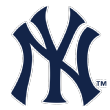 New York Yankees: Brien Taylor
New York Yankees: Brien Taylor
Also considered: Joe DiMaggio, Mickey Mantle, Jose Rijo, Derek Jeter, Ruben Rivera, Joba Chamberlain
Quote: “Bill Livesey is one of the greatest scouts of our era. He told me the best amateur position player he ever saw was A-Rod. The best amateur pitcher he ever saw was Brien Taylor.” — current Yankees GM Brian Cashman
You can certainly make an argument here for DiMaggio or Mantle. DiMaggio hit in a Pacific Coast League-record 61 straight games in 1933, putting him in the national press as a teenager. The Yankees purchased him for $50,000 after the 1934 season, which was a huge sum back then, letting him play one more season in San Francisco before bringing him to New York in 1936 with much fanfare. Mantle, likewise, received a lot of attention during his first major league spring training in 1951.
Those were different times, however, and the hype machine wasn’t the same by 1991. You had the perfect storm with Taylor. The Yankees drafted him first overall, just the second time they had ever picked first and just the second time a high school pitcher had gone first overall. Taylor’s background, emerging that spring from Beaufort, North Carolina, a small town on the coast, was the kind of story you love to see emerge in the draft. His selection also came at the height of when the baseball-card industry included prospects and draft-pick cards, so fans followed prospects like never before.
His agent was Scott Boras, who negotiated a record-setting $1.55 million bonus, blowing away the previous record of $575,000. “I’ve seen the talent now in 35 drafts,” Boras told ESPN.com a few years ago. “Every year I watch, and I have never seen someone like him.”
Taylor pitched well in the minors in 1992 and 1993, striking out 327 batters in 324 innings, but then tragedy struck. That offseason, Taylor’s brother got into a bar fight and Taylor went to protect him, putting up his arm to fend off a punch. He tore his rotator cuff completely off the bone. He never reached the majors.
 New York Mets: Gregg Jefferies
New York Mets: Gregg Jefferies
Also considered: Tom Seaver, Darryl Strawberry, Dwight Gooden
Quote: “When I see Pete Rose on TV and he gets a hit, the announcers always say how many hits he has now for his career. I hope he keeps building on it, because I’m going to beat that record.” — Jefferies
Strawberry was the No. 1 overall pick in 1980 and Gooden ripped up the minors with 300 strikeouts in 1983, but you can argue that Jefferies spawned modern prospect coverage. In the early years of Baseball America, the first outlet with in-depth prospect coverage, Jefferies appeared on the cover five times. He was BA’s minor league player of the year in 1986 after hitting .353 with 16 home runs and 57 steals at age 18 and again in 1987 after hitting .367 with 20 home runs at Double-A. He was a switch-hitting infielder and he was not lacking in confidence. The New York Times called him “arguably the best baseball player not on a major league roster.” He looked like a future All-Star who would win batting titles, especially after hitting .321 in a 29-game cameo in 1988. “Some players are labeled ‘can’t-miss,'” said Mets manager Davey Johnson. “He is ‘inevitable.'”
His Mets career never took off, as he hit .272 in his three full seasons with the team. His teammates didn’t like him; some were jealous of the hype. During one pregame workout, he was told to return to the clubhouse, where he found one of his bats broken into pieces. An anonymous teammate called him a “designated hitter playing third base.” Jefferies responded by saying, “I really am tired of being butchered. I don’t mean to sound like a baby because I’ve been quiet about this for three years. I just want to play baseball. I’m not taking this anymore.” He then went on WFAN and read a nine-paragraph letter, further responding to the criticism.
“It didn’t take the players long to figure out Gregg Jefferies was a losing player,” Lenny Dykstra wrote in his 2016 book. “He would spend hours rubbing his bats with some special concoction and specifically requested that they be stored separately from the rest of the team’s bats so they didn’t chip.”
You do wonder how Jefferies’ career might have turned out with a different organization. The Mets were a mess in the early 1990s. Jefferies landed in St. Louis in 1993, the Cardinals moved him to first base (he was a bad infielder), and he hit .342 and then .324 in 1994, making the All-Star team both years. He signed with the Phillies and hit .300 a couple of more times, although without much power, and then he got injured. He did not break Rose’s record.
One thing about Jefferies: He rarely struck out (he had more walks than K’s in his career and never struck out 50 times in a season). If I had to guess why he didn’t become a big star like his minor league numbers projected, it was because he was too good at making contact. He could put any pitch in play, which likely led to swings on bad pitches and weak contact.
TIER 3: THEY MIGHT BE GIANTS
 Tampa Bay Rays: Wander Franco
Tampa Bay Rays: Wander Franco
Also considered: Matt White, Josh Hamilton, B.J. Upton, Delmon Young, David Price, Matt Moore
Quote: “There are some with exceptional awareness of the strike zone. There are others who do an excellent job of identifying pitches. There are those who have a knack of controlling the barrel and covering the entire plate. Franco has all of those attributes, plus the ability to drive the ball with power.” — Baseball America scouting report
Hamilton, Young and Price were No. 1 overall picks. Upton was the second overall pick. Heading into his rookie season, many prospect experts rated Moore ahead of Mike Trout. But Franco’s hype exceeds them all. He’s the rare — maybe the first, at least in recent times — prospect to receive an 80 grade on his hit tool. He hit .327/.398/.487 as an 18-year-old in Class A last season, with more walks than strikeouts. Supposedly, at one point he went several weeks without swinging and missing at a pitch.
What could go wrong? In some ways, he’s very similar to Jefferies, a switch-hitting infielder under 6 feet tall who rarely strikes out. Franco has more raw power, Jefferies probably ran a little better. Franco has a chance to stick at shortstop, which Jefferies did not. Like Jefferies, Franco is not lacking in confidence. Hopefully none of his teammates will go behind his back to break his bats.
 Boston Red Sox: Ted Williams
Boston Red Sox: Ted Williams
Also considered: Jim Rice, Hanley Ramirez, Daisuke Matsuzaka, Xander Bogaerts, Andrew Benintendi, Yoan Moncada
Quote: “My goodness gracious, how that boy can hit. It wouldn’t surprise me if he becomes another Babe Ruth. I never saw anything like it. It doesn’t seem to make any difference where you pitch him. We gave him all sorts of stuff — high balls, low balls, inside pitches, outside pitches, fastballs, curveballs and slow balls. He hit them all.” — A’s manager Connie Mack, after seeing Williams in three spring training games in his rookie season
Williams was already a very big deal when he reported to Sarasota, Florida, for spring training in 1939. The Red Sox had acquired him from San Diego of the Pacific Coast League in December 1937 and farmed him out to Minneapolis, where he hit .366 with 43 home runs at age 19. Williams had been to camp with the Red Sox in 1938, so the Boston media already knew the brash youngster. After his big season at Minneapolis, the anticipation built even more for 1939, and Williams provided plenty of good copy to the local writers.
One writer asked Williams: “You think you’ll hit up here?”
Williams’ response: “Who’s going to stop me?”
The team hadn’t even started its exhibition season yet.
Mack wasn’t the only one to compare the young slugger to Ruth. “TED WILLIAMS REPLICA OF RUTH,” one headline read. Williams cracked his first major league home run in his fourth game, 430 feet away into the right-center bleachers at Fenway Park. The Boston Herald called it “as harshly hit a line drive as anybody ever sent into that sector, not excepting even Babe Ruth and the ever-present Jimmie Foxx.”
The next Babe Ruth? Yeah, pretty much.
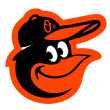 Baltimore Orioles: Ben McDonald
Baltimore Orioles: Ben McDonald
Also considered: Jeffrey Hammonds, Matt Wieters, Manny Machado
Quote: “This is my 28th year around this game, and at this juncture, he’s better than [Roger] Clemens, [Frank] Viola, Greg Swindell, any of those guys. None of those guys had the control this guy has. He has also handled adversity. If he gets lit up and 11 minicams come around, he can handle that. He knows the ways of the world.” — LSU coach Skip Bertman
A big old country boy from Louisiana, McDonald began his athletic career at LSU as a two-sport player but gave up basketball after his freshman year when he developed into one of the best pitching prospects in the country. After starring on the Olympic team in 1988, McDonald became the clear No. 1 pick for the 1989 draft, tossing 45 consecutive scoreless innings at one point. Other teams eventually quit scouting him, knowing the Orioles were going to take him.
The two sides entered into protracted contract negotiations, with Scott Boras threatening to take McDonald to a rumored new baseball league that was going to start up in 1990, backed by New York businessman Donald Trump. They eventually agreed on an unprecedented three-year, $800,000 major league contract, and McDonald made six relief appearances for the Orioles in September.
One controversy, even at the time, was Bertman’s usage of McDonald at LSU. Five times McDonald had pitched a complete game and then closed out a game the next day. Over an 18-month period between his sophomore and junior seasons, including his time with Team USA, McDonald threw 352 innings.
“I’ve been asked this a million times,” McDonald told The Athletic last year. “‘Did you throw too many pitches at LSU? Did you throw too many pitches in high school?’ The answer is probably yeah; we didn’t know then what we know now and how to take care of an arm. And so I was a product of my time. I was a competitor. I was just one of those kids that if the coach says, ‘Can ya?’ I’d say, ‘Yessir. You give me a chance and I will.'”
McDonald tossed a four-hit shutout in his first major league start and finished his rookie season in 1990 with a 2.43 ERA, but he finished with a 78-70 career record, 3.91 ERA and 20.8 WAR. He retired at 29 after tearing his rotator cuff.
 St. Louis Cardinals: J.D. Drew
St. Louis Cardinals: J.D. Drew
Also considered: Rick Ankiel
Quote: “Does everything well. Great bat speed and contact with all-field towering-type power. Outstanding mental approach to hitting. Can really drive the ball. Plus speed and causes havoc on the bases — can steal runs. Best I have seen on playing line drive to CF. Good hands, great range, jumps and routes. Aggressive, dangerous player who is exciting to watch and makes things happen.” — White Sox scouting report during Drew’s draft year
All J.D. Drew wanted to do was stand up for his rights. He became a baseball pariah as a result, despised by fans across the country. Drew had been college baseball’s first 30-30 player at Florida State in 1997, hitting .455 with 31 home runs and 32 steals. He set his value at $10 million, which was what high school pitcher Matt White had received in 1996, after a technicality in the draft rules had made him a free agent. Drew, however, could negotiate with only one team. He had few options. The Tigers bypassed him with the first pick. The Phillies took him with the second pick and offered $2 million. The negotiations with agent Scott Boras turned ugly. Drew didn’t sign.
Drew reentered the draft in 1998 and the Cardinals took him with the fifth pick (Drew settled for a guaranteed $7 million). He was in the majors in September. Drew had a very successful 14-year major league career, with 44.9 WAR, although he made just one All-Star team and received MVP votes just one time (he finished sixth in 2004). He played without emotion, and many — writers, fans, even teammates — viewed him as soft because he missed a lot of time with injuries. He did play on many good teams, however, making eight trips to the postseason. If anything, the perception of Drew goes back to the scouting report and the allure — and warnings — of prospect hype: He was the best amateur player in the country for two years, creating sky-high expectations. When he didn’t reach those, he was called overrated. In the end, he became underrated.
 Minnesota Twins: Joe Mauer
Minnesota Twins: Joe Mauer
Also considered: Byron Buxton
Quote: “Though he hit just nine home runs in three minor league seasons, he showed much more power in Minnesota, building the Twins’ confidence that he could hit as many as 35-40 homers on an annual basis.” — Baseball America
The Twins had a difficult choice with the first pick in the 2001 draft. Mark Prior was the consensus top talent, but he was going to command a large signing bonus. Mauer grew up 10 minutes from the Metrodome and Twins scouts had seen him play more than 100 games as an amateur, but he had also been the national high school football player of the year in 2000 and committed to play quarterback at Florida State, so he wouldn’t be an easy sign either.
The Twins went with the local kid, claiming he was a legitimate No. 1 pick. “I know a number of teams thought he may be the best guy in the draft,” Twins scouting director Mike Radcliff said. Mauer signed for a $5.15 million bonus. The Cubs signed Prior to a $10.5 million major league contract — which held as the highest until Strasburg’s deal with the Nationals eight years later.
The Twins might have saved money, but they also ended up with the right player. Mauer ranked seventh on BA’s prospect list in 2002, fourth in 2003 and then first in 2004 and again in 2005 (he remained eligible since injuries limited him to just 35 games in the majors in 2004). That allowed the hype to build even more as he remained a prospect for an extra season. BA gave him 80-grade tools for his hit, arm and defense — with the belief he would eventually tap into more power.
That never happened other than the 28-homer season when he won the MVP award, but he won three batting titles, including in 2009, when he hit .365. He finished with a .306 career average and goes down as perhaps the greatest player in Twins history (only Rod Carew has more WAR, 63.8 to 55.3).
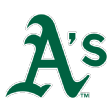 Oakland Athletics: Todd Van Poppel
Oakland Athletics: Todd Van Poppel
Also considered: Reggie Jackson, Ben Grieve
Quote: “He’s one of the best high school pitchers I’ve ever seen and I’ve been scouting 30 years. He has a good curveball, he’s 6-foot-5, he throws hard — he just pitches. I scouted Nolan Ryan in high school and I never saw Nolan throw as hard as this kid.” — Cardinals scouting director Fred McAlister
Van Poppel was a hard-throwing kid from Arlington, Texas — and thus the comparisons to fellow Texans Ryan and Roger Clemens were inevitable. He was the top talent in the 1990 draft but also firmly committed to the University of Texas, saying he wanted to go to school and pitch in the 1992 Olympics. The Braves passed on him with the top pick, settling instead for Chipper Jones (thank the baseball gods). Van Poppel fell to the A’s with the 14th pick, and they signed him to a record $1.2 million major league contract that also put him on the fast track to the majors. He was Baseball America’s top prospect in 1991.
It didn’t work out. Van Poppel threw hard, but his fastball was straight. His control was wobbly — he had walked 90 in 132⅓ innings in Double-A in 1991 — but the A’s had to rush him to the majors because of the major league contract. It didn’t help that he came up in the heart of the offense-happy steroid era. In his rookie season in 1993, he walked 62 and struck out just 47 in 84 innings. In 1994, he led the AL in walks. In August 1996, when he was still just 24 years old, the A’s waived him.
 Miami Marlins: Josh Beckett
Miami Marlins: Josh Beckett
Also considered: Livan Hernandez, Jeremy Hermida, Giancarlo Stanton, Jose Fernandez
Quote: “I think I’m the best. That goes along with being arrogant out there. You’ve got to think you’re the best. I bet if you ask Roger Clemens if he thinks he’s the best he’d say yes. Randy Johnson would say the same thing.” — Josh Beckett as a high school senior
No high school right-hander has ever been selected first overall in the draft, but Beckett probably came closest, when the Marlins took him second overall in 1999, with the Rays deciding at the last juncture to take Josh Hamilton with the first pick. Many scouts called him the best high school pitcher they had ever seen — and like Van Poppel before him, he was compared to fellow Texans Ryan, Clemens and now Kerry Wood. Beckett signed a four-year, $7 million major league contract with the Marlins and declared that he wanted to be an All-Star in two years.
That didn’t quite happen, but perhaps only because a sore shoulder limited him in his first pro season in 2000. In 2001, he had one of the most dominant minor league seasons of the draft era, going 14-1 with 1.54 ERA across Class A and Double-A, with 203 strikeouts, 34 walks and just 82 hits in 140 innings. He debuted with the Marlins that September, posting a 1.50 ERA in four starts, and entered 2002 as the top prospect in baseball. In the fall of 2003, he pitched the Marlins to the World Series title with a five-hit shutout of the Yankees in the clinching Game 6.
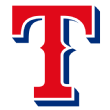 Texas Rangers: David Clyde
Texas Rangers: David Clyde
Also considered: Bobby Witt, Juan Gonzalez, Mark Teixeira, Hank Blalock, Jurickson Profar
Quote: “At 18, he was as good as any kid I ever saw, including Nolan Ryan, Gary Gentry, Jon Matlack and Tug McGraw. He had a good fastball, a great curveball, a great delivery, poise and control. Boy, that kid had an arm on him in high school. Some of those kids went up to the plate shaking when he was pitching.” — Whitey Herzog, Rangers manager in 1973
In a sense, David Clyde never had a chance to be a prospect. The Rangers selected Clyde first overall in the 1973 draft, a hard-throwing lefty out of Houston’s Westchester High School, where he had gone 18-0 with a 0.18 ERA and 328 strikeouts in 148 innings as a senior. In five Texas 5-A playoff games, he threw five shutouts, including three no-hitters. Some scouts compared him to Sandy Koufax. Clyde wore No. 32, same as Koufax, his idol.
Nineteen days after completing his storied high school career, Clyde was asked to make his pro debut in the majors with the Rangers. The team was in its second season in Arlington, and Rangers owner Bob Short saw Clyde as a financial windfall. The team had finished last in 1972, averaging just 8,840 fans per game. The Rangers were last again in 1973 and averaging even fewer fans per game when Clyde debuted on June 27. There were two bands on hand, Polynesian dancers, two lion cubs and a papier-mâché giraffe on wheels. It was the first sellout in Rangers history.
Clyde pitched five innings, allowed one hit (a two-run home run) and won the game. He fanned eight. He also walked seven and threw 112 pitches. When it was announced over the PA system in the top of the fifth inning that it would be Clyde’s final inning, the crowd gave him a minutes-long standing ovation when he emerged from the dugout.
You may know the rest of the story. Clyde struggled for a couple of seasons, finally went down to the minors in 1975, developing a drinking problem, went to Cleveland, got hurt. He won 18 games in the majors. What might have happened, we’ll never know. Before that first game, Herzog had told reporters: “I’ve got nothing to do with it, but if I was the director of player personnel here, as I was with the Mets, I tell you I’d be raising hell about this. A young pitcher in his first year should be out where he can dominate.”
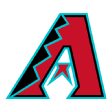 Arizona Diamondbacks: Justin Upton
Arizona Diamondbacks: Justin Upton
Also considered: Travis Lee
Quote: “He is a tremendously gifted player, both in terms of his athletic ability and his baseball ability. He has a maturity about him that is unbelievable for a player who is 17.” — Diamondbacks general manager Joe Garagiola Jr.
Three years after older brother B.J. Upton went second overall, the Diamondbacks selected Justin first overall in 2005 — the top pick in one of the most loaded drafts of all time (the first round included Alex Gordon, Ryan Zimmerman, Ryan Braun, Troy Tulowitzki, Cameron Maybin, Andrew McCutchen, Jay Bruce and Jacoby Ellsbury).
Scouts had eyed Upton since he was a 14-year-old freshman at Great Bridge High School in Chesapeake, Virginia. He showed up uninvited to the Area Code Games in California and impressed scouts with his tools and athletic ability. He starred on various U.S. national teams and was the easy No. 1 selection, still just 17 years old on draft day. He played 2006 in the Midwest League and then tore up High-A and Double-A in 2007, earning a promotion to the big leagues while still a teenager. He’s still hanging around, having made four All-Star teams and sitting on 298 career home runs and 34.4 career WAR.
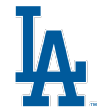 Los Angeles Dodgers: Corey Seager
Los Angeles Dodgers: Corey Seager
Also considered: Bobby Valentine, Mike Marshall, Darren Dreifort, Paul Konerko, Adrian Beltre, Clayton Kershaw, Gavin Lux
Quote: “Seager is the game’s best prospect, a superlative hitter who projects to do everything at the plate. [He] has electric hands at the plate and does everything very easily — his swing, hip rotation and power look effortless — but it’s his approach that makes him the best prospect in baseball. Seager’s pitch recognition is advanced way beyond his years, and you’ll see him make adjustments within at-bats that even veterans don’t make. … He has MVP upside even if he moves to third and would be even more valuable if he beats my expectations and hangs around at short.” — Keith Law, ESPN.com
I didn’t know exactly where to go with the Dodgers. I mean, if you go all the way back to the Brooklyn Dodgers, you have to go Jackie Robinson. Hard to top him. Sandy Koufax was a bonus baby who under the rules of the time had to go straight to the big leagues. Fernandomania didn’t really start until after Fernando Valenzuela started his dominant run out of the gate as a rookie in 1981.
So let’s default to Seager, the Dodgers’ only No. 1 overall prospect in the Baseball America era. Seager was a first-round pick in 2012, 18th overall, the younger brother of Mariners third baseman Kyle Seager — although taller and leaner than his older brother. Corey busted out in the minors in 2014, hitting .349 with 50 doubles and 20 home runs, and then hit .278 at Triple-A in 2015. What really got everyone excited, however, was his September call-up that year with the Dodgers: In 27 games, he hit .337/.425/.561 with four home runs and an impressive 14 walks against 19 strikeouts. That earned him top-prospect status heading into 2016.
Seager didn’t disappoint, winning Rookie of the Year honors and finishing third in the MVP voting. Tommy John surgery in 2018 created a bump along his path, and his return in 2019 was a little uneven, although he did lead the NL with 44 doubles. He’s also proved that he can remain at shortstop, despite the doubts related to his size that he could stick there. It will be interesting to see what happens moving forward, as his rookie season remains his best year, when he looked like he would become an annual MVP candidate and a player who could hit .300 with 30 home runs. His hard-hit rate is actually only middle of the pack and he’s become more fly-ball-happy, but that hasn’t translated into more home runs.
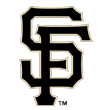 San Francisco Giants: Tim Lincecum
San Francisco Giants: Tim Lincecum
Also considered: Will Clark, Jesse Foppert, Buster Posey
Quote: “In my 13 years in the big leagues, this is the only guy I’ve seen who really is worth the hype. The first one. The real deal. And the reason I say that is not just the stuff. That’s obvious to everybody. But it’s the fact that he’s a great kid who is smart, who is willing to learn and who respects the game. I really mean that. He’s an easy kid to root for, and I don’t say that just because he’s my teammate. He’s going to be great for this game.” — Giants infielder Rich Aurilia
Teams didn’t know what to do with Lincecum in the 2006 draft. He was arguably the best pitcher in college baseball, striking out 199 in 125⅓ innings for the University of Washington, and he threw 98 mph with a knee-buckling curveball. He was also 5-foot-10, 165 pounds or so, with an unorthodox delivery. Some saw him as a reliever. Some saw a pitcher who would break down because of his size and mechanics.
While pre-draft reports suggested Lincecum could go first overall, the Royals instead selected Luke Hochevar. Six of the first seven players selected were pitchers. One was Clayton Kershaw, but Greg Reynolds? Brad Lincoln? Even the hometown Mariners bypassed Lincecum for Brandon Morrow. The Giants took him with the 10th pick.
He needed just 13 starts to reach the majors. In five starts in Triple-A in 2007, he allowed one run and 12 hits in 31 innings. His major league debut in May became must-watch TV. Who was this little guy with the huge fastball? Lincecum did eventually break down, but not before he won two Cy Young Awards, made four All-Star teams, won 110 games and helped the Giants win three World Series.
 San Diego Padres: Fernando Tatis Jr.
San Diego Padres: Fernando Tatis Jr.
Also considered: Mike Ivie, Dave Winfield, Kevin McReynolds, Andy Benes, Sandy Alomar Jr., Sean Burroughs
Quote: “Tatis looks like a younger Manny Machado, but he is stronger than Machado was at the same age, and there are similarities between their games across the board. Tatis has crazy strength for his age and has shown an advanced approach at the plate, leading the Midwest League in walks as an 18-year-old in 2017.” — Keith Law, ESPN.com
The Padres have had, shall we say, an interesting prospect history. Ivie was a power-hitting catcher, the first player selected in 1970, but he developed the yips and had to move to first base. Winfield went straight to the majors after he was drafted fourth overall in 1973. McReynolds, the first cover subject in Baseball America history (when he was at Arkansas), hit .377/.424/.735 at Triple-A Las Vegas in 1983. Benes was the first pick in 1988 and a very big deal. Alomar was traded to the Indians. Burroughs ranked as high as fourth on BA’s annual top 100 but never developed any power.
I’ll go with Tatis. While every other outlet had Vladimir Guerrero Jr. as the top prospect entering 2019, Keith had Tatis as his top player, with the obvious positional advantage and athleticism edge over Guerrero. He played so well in spring training that the Padres skipped him past Triple-A and onto the Opening Day roster, and he responded with a remarkable rookie season, hitting .317/.379/.590 in 84 games before his season ended early with a back injury. He also missed time during his Double-A season, so health appears to be the only thing preventing him from becoming a franchise cornerstone.
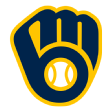 Milwaukee Brewers: Gary Sheffield
Milwaukee Brewers: Gary Sheffield
Also considered: Robin Yount, Ben Sheets
Quote: “Gary Sheffield has a chance to become a major league superstar. He can be the most exciting offensive player in the history of the organization.” — Dan Duquette, Brewers coordinator of scouting
Beyond the left-field fence of Kindrick Legion Field in Helena, Montana, there used to be a house with a giant bull’s-eye target painted on the roof. Or, I should say, there used to be a bull’s-eye. I think the house is still there, but the bull’s-eye is not. A new roof or something. Somebody had painted the bull’s-eye to commemorate the landing spot of a long home run Sheffield had hit back in the summer of 1986.
Sheffield, 17, hit .364/.413/.640 with 15 home runs and 71 RBIs in 57 games for the Helena Gold Sox that summer. He struck out just 14 times. He had been the sixth pick in the draft, the nephew of Dwight Gooden, then perhaps the biggest name in the sport. The bat speed was incredible, the sky the limit. During the winter of 1986, Gooden, Sheffield and a couple of friends were arrested after a fight with Tampa police officers.
With that in mind, Duquette also alluded to something else in that story from February 1987: “Now we have to get him to develop the habits of a professional athlete.”
That didn’t happen in Milwaukee. Sheffield reached the majors in 1988, still just 19 years old. His fielding at shortstop was shaky. Sent back down to the minors in 1989 because of “indifferent fielding,” Sheffield said he had an injured foot; the Brewers didn’t believe him. Back in the minors, it was revealed that Sheffield did indeed have a fractured foot. He had lost all trust in his organization. Called back up, he moved to third base for Bill Spiers and claimed the decision was racially motivated. He later claimed he made errors on purpose in his frustration, although he later retracted that statement.
In the end, he did become a superstar, finishing with 509 home runs, more than 1,600 RBIs, a .292 career average, more walks than strikeouts and nine All-Star appearances. Mentioned in the Mitchell report, however, he still waits for a spot in Cooperstown.
TIER 4: YOU NEVER KNOW
Also considered: J.R. Richard, Floyd Bannister, Eric Anthony
Quote: “Always younger and more advanced than his competition, Correa has baseball instincts and abilities that come naturally. His tremendous athletic ability results in smooth, seemingly effortless movements. His desire and passion are evident in his no-nonsense demeanor. His current strength and power are merely hints at what we may expect in the future.” — MLB.com scouting report on Correa as a minor leaguer
J.R. Richard fanned 15 batters in his major league debut in 1971, Bannister was the first pick in 1976 out of Arizona State and Anthony was Baseball America’s No. 8 prospect in 1990 after bashing 31 home runs in the minors in 1989, but I give the nod to Correa, another No. 1 overall pick, in 2012.
Unlike many other first picks, Correa wasn’t the slam-dunk top choice. He wasn’t sold as the next Alex Rodriguez or Derek Jeter. He was actually a compromise pick of sorts. Heading into the draft, the Astros were expected to take Mark Appel or Byron Buxton. Instead, the Astros went with Correa — making him the first No. 1 overall pick from Puerto Rico — and signed him to a below-slot deal of $4.8 million (less than the $6 million Buxton received as the second pick), which allowed them to also draft and sign Lance McCullers Jr.
Correa quickly proved he merited the choice, hitting .320 in the minors in 2013 and .325 in 2014. He was the No. 4 prospect entering 2015, tore through Double-A and Triple-A early in 2015 and reached the majors, hitting 22 home runs in 99 games to win Rookie of the Year honors.
 Cincinnati Reds: Billy Hamilton
Cincinnati Reds: Billy Hamilton
Also considered: Jay Bruce, Aroldis Chapman
Quote: “Last year was Hamilton’s explosion, the season during which his status became ubiquitous and his speed became folklore. In 132 minor-league games, Hamilton stole an insane 155 bases, creating must-see moments in every game and pushing himself into the top tier of prospects in the minors.” — Baseball Prospectus
Bruce was Baseball America’s top prospect in 2008 and drew comparisons to Larry Walker, Jim Edmonds and Ken Griffey Jr. Chapman’s fastball was already legendary when the Reds called him up. Hamilton had obvious holes in his game, but few minor leaguers in recent years have received as much attention as Hamilton. Could somebody really steal 155 bases? Exactly how fast was this kid? He wasn’t the best prospect in the minors — he peaked at No. 20 in 2013 and MLB.com had him No. 11 that year — but he was absolutely the most fascinating.
Hamilton had followed his 155-steal season in 2012 with 75 steals in Triple-A and 13 more in 14 attempts in a September cameo with the Reds. When was the last time you tuned in to watch a pinch-running specialist? You could dream on Hamilton becoming the majors’ first 100-steal player since Vince Coleman in 1987 — if the bat came around. It did not. He has posted an OBP over .300 just once in his career, limiting his opportunities for thievery, and while he’s had four 50-steal seasons, he’s never led the league. His defense and speed made him a good player for a few seasons, but now he’s fighting to remain in the majors.
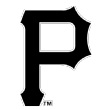 Pittsburgh Pirates: Kris Benson
Pittsburgh Pirates: Kris Benson
Also considered: Paul Pettit, Bob Bailey, Barry Bonds, Jeff King, Gerrit Cole
Quote: “Kris hits his spots so well, you could catch him with a Styrofoam cup.” — James Beavers, Benson’s summer league coach in high school
No obvious top guy here for the Pirates. Pettit was baseball’s first $100,000 bonus baby when the Pirates signed him in 1950 (he got hurt and won just one game in the majors). Bonds was a heralded prospect coming out of Arizona State and reached the majors in less than a year. King and Cole were No. 1 overall picks, although Cole had hardly dominated in his junior season at UCLA with a 6-8 record and a 3.31 ERA.
Benson was also the No. 1 overall pick coming out of Clemson, and he did look like an absolute lock to become a star. He had Strasburg- and Prior-like stats, going 14-2 with a 2.02 ERA with 204 strikeouts and just 27 walks in 156 innings. He threw 93-96 mph and touched 98 with plus command. The Pirates zeroed in on him early as the top player in the draft. He was Baseball America’s No. 7 prospect in both 1997 and 1998, although he slid all the way down to 59 in 1999 after a rough go in Triple-A.
He had more success in the majors, posting 2.4 WAR as a rookie in 1999 and then 5.1 as a sophomore in 2000. Then came Tommy John surgery. He missed all of 2001, and when he returned he threw 90 instead of 95. He was traded to the Mets (Jose Bautista was in that deal) and then to the Orioles and got injured again. He finished 70-75 in his career.
 Philadelphia Phillies: Domonic Brown
Philadelphia Phillies: Domonic Brown
Also considered: Juan Samuel, Pat Burrell
Quote: “He has five-tool ability, with his bat getting the most attention. Brown creates incredible bat speed with his whip-like, uppercut swing and has eliminated previous questions about his power.” — Baseball America scouting report
The Phillies didn’t have an obvious guy either, so I asked Phillies fan Eric Karabell, and he suggested Brown. Brown reached peak prospect hype after a breakout season in the minors in 2010, when he hit .327/.391/.589 across Double-A and Triple-A and was the consensus No. 4 prospect entering 2011.
I remember watching Brown early in his big league career, and the first thing that stood out was that he was a terrible outfielder. Even though scouts described him as a five-tool player, his routes and instincts in the outfield were bad and awkward. Maybe I just saw a few bad plays, but he looked so clumsy out there that it seemed clear to me that while he had athletic tools, he lacked the natural base instincts that great players possess.
There may have been a couple of other issues. For some reason, the Phillies messed with his swing in spring training in 2011, having him lower his hands (he later abandoned that idea). He also had several hand injuries along the way. He had the monster first half in 2013, when he hit 23 home runs and made the All-Star team, but his last season in the majors came just two years later.
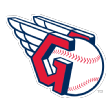 Cleveland Indians: Sandy Alomar Jr.
Cleveland Indians: Sandy Alomar Jr.
Also considered: Bob Feller, Von Hayes, Mark Lewis, Manny Ramirez, Francisco Lindor
Quote: “A sure thing? No way, not in baseball. But if Sandy Alomar Jr. isn’t a superstar waiting for the big bang to happen, it will be the most disappointing event in Cleveland Indians’ history since Joe Charboneau dyed his hair orange and pink.” — Sheldon Ocker, Akron Beacon Journal
Alomar is surprisingly the only Cleveland player to make the top five of Baseball America’s top-100 lists. Ramirez was certainly highly regarded but topped out at No. 7. Lindor climbed no higher than No. 9, as nobody foresaw the kind of power he would develop. You can certainly make a case for either of them or, going way back, for Feller.
A quick word on Feller. The Indians brought him to the majors in 1936 at age 17 right off the Iowa farm, without any professional experience, and he soon made headlines when he struck out eight Cardinals over three innings in an exhibition game. After a few relief appearances, he struck out 15 in his first start, falling one short of Rube Waddell’s then-American League record of 16. That earned him headlines in every paper across the country, and a few starts later he fanned 17 to set the new mark. That made him one of the most famous players in the country — and he hadn’t even graduated from high school yet. In fact, when he finished up high school that winter, NBC Radio covered his graduation.
Anyway, back to Alomar. He had been The Sporting News’ minor league player of the year in both 1988 and 1989 and Baseball America’s minor league player of the year in 1989. Blocked in San Diego by Benito Santiago, however, the Padres traded Alomar (and Carlos Baerga) for Joe Carter. I never quite understood the Alomar hype. He had hit .306 with 13 home runs for Las Vegas in 1989 and was certainly already an excellent defender. Still, he wasn’t your typical flashy prospect with huge upside. But fans loved him (or bought into the hype). He was voted to start the All-Star Game as a rookie (he would go on to win Rookie of the Year), again in 1991 (even though he had four RBIs at the break) and again in 1992 (even though he was hitting .241 with two home runs). He would go on to have a long major league career, although he played 100 games just four times due to a string of injuries early on.
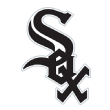 Chicago White Sox: Joe Borchard
Chicago White Sox: Joe Borchard
Also considered: Robin Ventura, Frank Thomas, Alex Fernandez, Yoan Moncada, Eloy Jimenez, Luis Robert
Quote: Borchard has “the best power from a college player since Mark McGwire.” — White Sox scouting director Duane Shaffer
I wasn’t sure where to go with the White Sox. It’s easy to default to Thomas, but my recollection is that the hype for him didn’t really kick into high gear until he was called up and hit .330 in 60 games as a rookie in 1990. Maybe it’s one of the recent guys, as you could easily make the case for Yoan Moncada, Eloy Jimenez or Luis Robert. I asked longtime White Sox fan Jonathan Hood, host of ESPN1000 in Chicago, and he suggested Borchard.
Borchard was a Stanford outfielder the White Sox selected 12th overall in 2000. Borchard was also the Stanford quarterback, with a chance to be a first-round pick in the 2001 NFL draft. The White Sox gave him a record $5.3 million to secure his full-time commitment to baseball. By comparison, Adrian Gonzalez, the first pick in the draft, received a $3 million bonus. Sandy Alderson, MLB’s VP of operations, was critical of the signing. “In my judgment, it isn’t a good signing,” he said. “It’s unfortunate when clubs that are usually at the forefront of industry criticism end up adopting the same practices themselves.”
Borchard hit .295 with 27 home runs at Double-A in 2001 and then .272 with 20 home runs at Triple-A in 2002, so the power was there. So were the strikeouts. He struck out 158 times in 2001 and 139 times in 2002. His only chance at regular playing time for the White Sox was after a midseason call-up in 2004, when he played the final three months. He hit .174. He was back in the minors in 2005 and traded to Seattle in 2006. His major league career would consist of just 800 plate appearances.
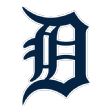 Detroit Tigers: Matt Anderson
Detroit Tigers: Matt Anderson
Also considered: Al Kaline, Kirk Gibson, Justin Verlander, Cameron Maybin, Andrew Miller, Casey Mize
Quote: “We felt Matt had the best arm in the draft. He has a terrific arm and terrific makeup.” — Tigers general manager Randy Smith
The Tigers are the only team without a single player ranked in Baseball America’s top five overall prospects since those lists debuted in 1990. Maybin reached No. 6 in 2007 and Miller No. 10 the same year (both were later traded for Miguel Cabrera). Gibson was an All-America wide receiver at Michigan State when the Tigers drafted him in the first round and a ballyhooed prospect. Verlander, despite a 1.29 ERA in the minors in 2005, was just the No. 8 prospect in 2006.
Anderson was ranked 24th on the list in his one year of eligibility, but he was the first overall pick in 1997, a right-hander from Rice who clocked triple digits on the radar gun. The twist: He was a relief pitcher. Yes, an odd choice for the first pick, made in part because the Tigers perceived that Anderson would be easier to sign.
He actually didn’t sign until December but reached the majors quickly. He struggled with his control, however, walking 111 in 156⅓ innings in his first three seasons. A White Sox scouting report from his draft year helps explain his control problems: “Max effort delivery. Little bit of a long armer in back. Flies with frontside and spins off with lower half. Location of pitches will be a problem with this delivery. Needs to have a second or third pitch. Even with his arm strength the hitters take their cuts.” Anderson did have a bit of a breakthrough in 2001, when he saved 22 games in 24 opportunities (although with a 4.82 ERA). That got him a three-year, $9.3 million contract from Detroit, but he hurt his arm in 2002 and pitched just 44 more innings in the majors.
 Colorado Rockies: Ian Stewart
Colorado Rockies: Ian Stewart
Also considered: Todd Helton, Troy Tulowitzki, Dexter Fowler
Quote: “Farm director Bill Geivett wanted Stewart to finish 2004 where he began, just as Vladimir Guerrero spent all of 1995 in the SAL when Geivett was the farm director with the Expos. Geivett likens Stewart’s hitting ability to that of Guerrero, who finished his next season in the majors.” — Baseball America
Stewart is the only Rockies prospect to crack the overall top five of Baseball America’s top-100 lists, when he was ranked fourth heading into 2005. Helton was 11th in 1998 and Tulowitzki 15th in 2007. Nolan Arenado, for the curious, peaked at No. 42 in 2012 (although he was higher on other lists). The Rockies had drafted Stewart 10th overall in 2003 and he had a big season at Low-A Asheville in 2004, hitting .319/.398/.594 with 30 home runs and vaulting into top-prospect status.
Stewart never hit as well in the upper levels of the minors — Asheville’s hitter-friendly environment certainly helped boost his numbers, although he did slug .568 on the road one season — and he would end up appearing on five Baseball America top-100 lists before the Rockies finally gave him a regular job in 2009. Actually, he still platooned that season and never batted 500 times in a major league season, finishing with a .229 career average.

